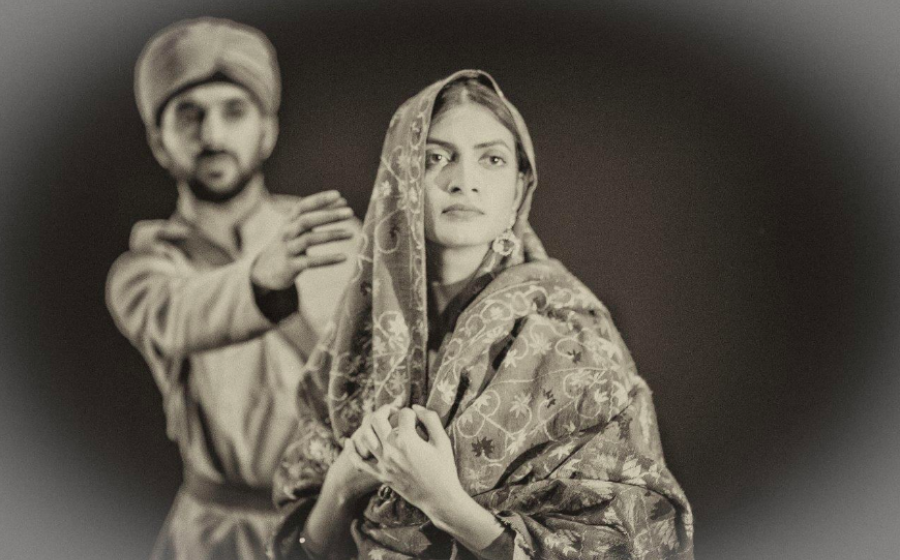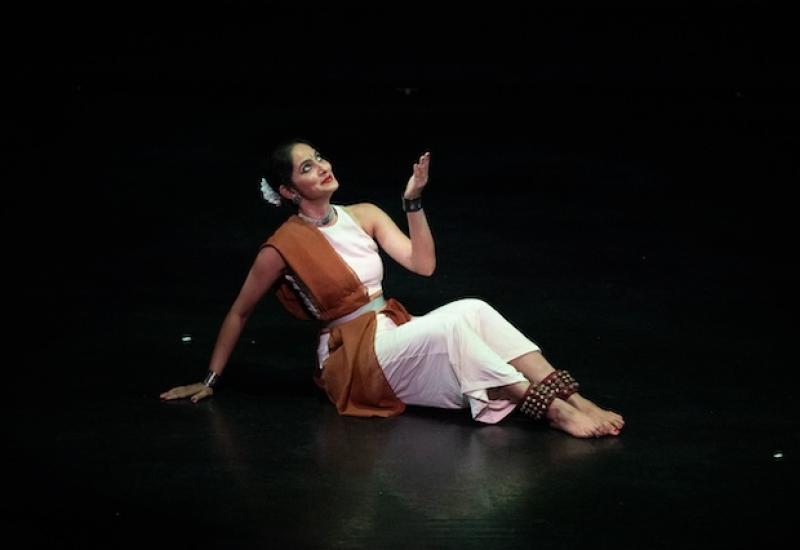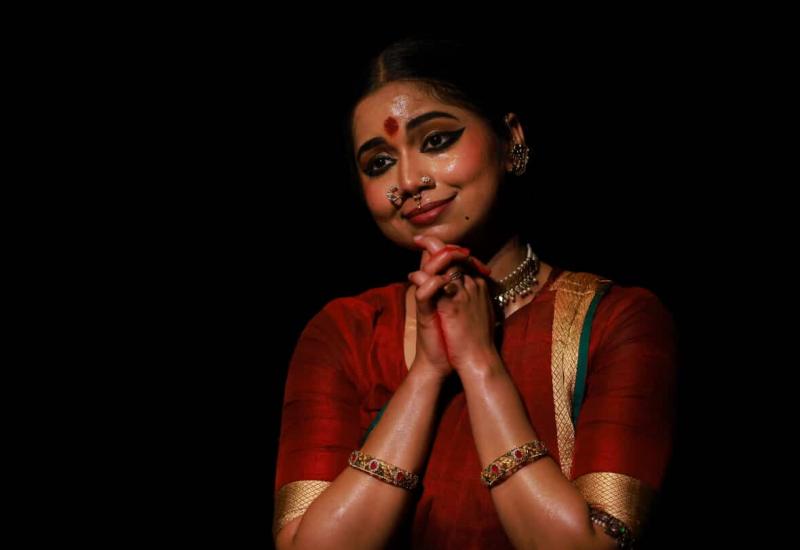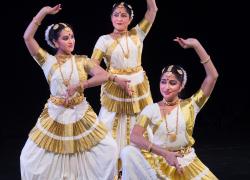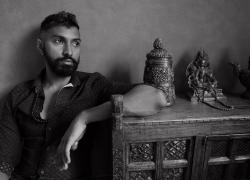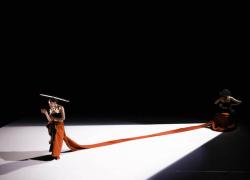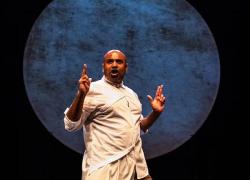The Troth
The Troth
Akademi and Gary Clarke
Saturday 5 May 2018
Alchemy Festival, Queen Elizabeth Hall, Southbank Centre, London
Reviewed by Nicholas Minns
Gary Clarke’s choreographic adaptation of The Troth at Queen Elizabeth Hall is based on a love story (Usne Kaha Tha in its original Hindi) written by Chandradhar Sharma Guleri in 1915 that is set against the background of India’s involvement in the First World War as part of the British Empire.
As a youth Lehna Singh (Subhash Viman Gorania) meets Leela (Vidya Patel), like Romeo meeting Juliet, at a market festival and falls in love with her. When he bumps into her some years later, he learns she is betrothed. He answers a recruitment call to join the British Army and begins training. Eighteen years into the story, on the outbreak of the First World War, he discovers that his Captain (Songhay Toldon) is Leela’s husband and father of their son, Bodha (Dom Coffey), who is also leaving for the front. On their departure Leela takes Lehna aside and makes him promise to protect her family at all costs. Driven by his love for Leela and his sense of duty, Lehna fulfills his promise at the cost of his own life.
There is in the relationship between Lehna and Leela a metaphor for the ties between India and the British Raj, whether Guleri meant it or not. The British Army’s inducements to Indians like Lehna to protect the Empire were more calculatingly material — a contemporary recruitment poster offers shoes and food in return for the sacrifice of their lives — but the honourable relationship between country and beloved motherland had the same tragic consequences.
Despite its historical context, there is no horror in the re-telling of this story; dance can’t do horror very well and even the projected archival film footage of Indian soldiers on the front is quite sanitized, filmed from a safe distance behind the lines and suffused with subtle propaganda. One photograph of a pair of disintegrating legs attached to their boots in the mud is the only graphic image, a reminder of the fate of 60,000 Indian soldiers in the conflict. Sriram’s percussive sound score rattles with bullets and explosions at high intensity and the dancers run at full tilt and fly to the ground in the chaos of battle but the reiteration of such physical exertion becomes a choreographic trope unless Clarke is suggesting the naivety of gymnastic preparations for modern warfare. The staged vigour of the soldiers is not far removed from the earlier men’s dances in the market, but how can one possibly approach on stage the conditions under which these soldiers had to exist in the trenches?
Neither did Guleri intend to write an anti-war tract; he was more concerned with the qualities of the heart. Hence, while Clarke’s treatment of The Troth can only approximate the war experiences, he shows more convincingly — because we can relate more easily with it and because dance can do it so well — the romance of Guleri’s story.
Clarke, as choreographer and director, takes the story at face value, and in Patel he has a convincing heroine for whom Gorania is quite understandably willing to sacrifice himself. But in framing the story on the troth between Lehna and Leela Clarke and producer, Akademi, risk subsuming the broader political picture into a romantic evocation of the past. This year marks the centenary of the end of the First World War, and The Troth is part of a cultural outpouring marking its remembrance. Next month, for example, Akram Khan’s full-scale solo Xenos ‘conjures the shell-shocked dream of a colonial soldier in the context of the First World War’ while English National Ballet will reprise its Lest We Forget program in September. The tendency of such works, and of the commemorative purposes underlying them, is to focus on the effects of war rather than on its causes; hence the stories of loss, love, loyalty, heroism and pity (‘The poetry is in the pity’, as Wilfred Owen wrote in a preface to his war poems). And yet in imbuing these stories with remembrance, are we not in danger of forgetting the political forces that engendered them, those same political forces that continue to preside over their remembrance?
In Clarke’s previous work, Coal, about the 1984/85 coal miner’s strike, he contextualizes political force by juxtaposing the lives of the miners and their families with an appearance by a belligerent Mrs. Thatcher. It is this tension that holds the work together but in The Troth the use of archival film as historical context is little more than background and barely offsets the lack of narrative tension in the story. Perhaps Clarke could have found a way to use the political metaphor in the story but that would have run the risk of a post-colonial reading at odds with the commemorative intention of the work.


